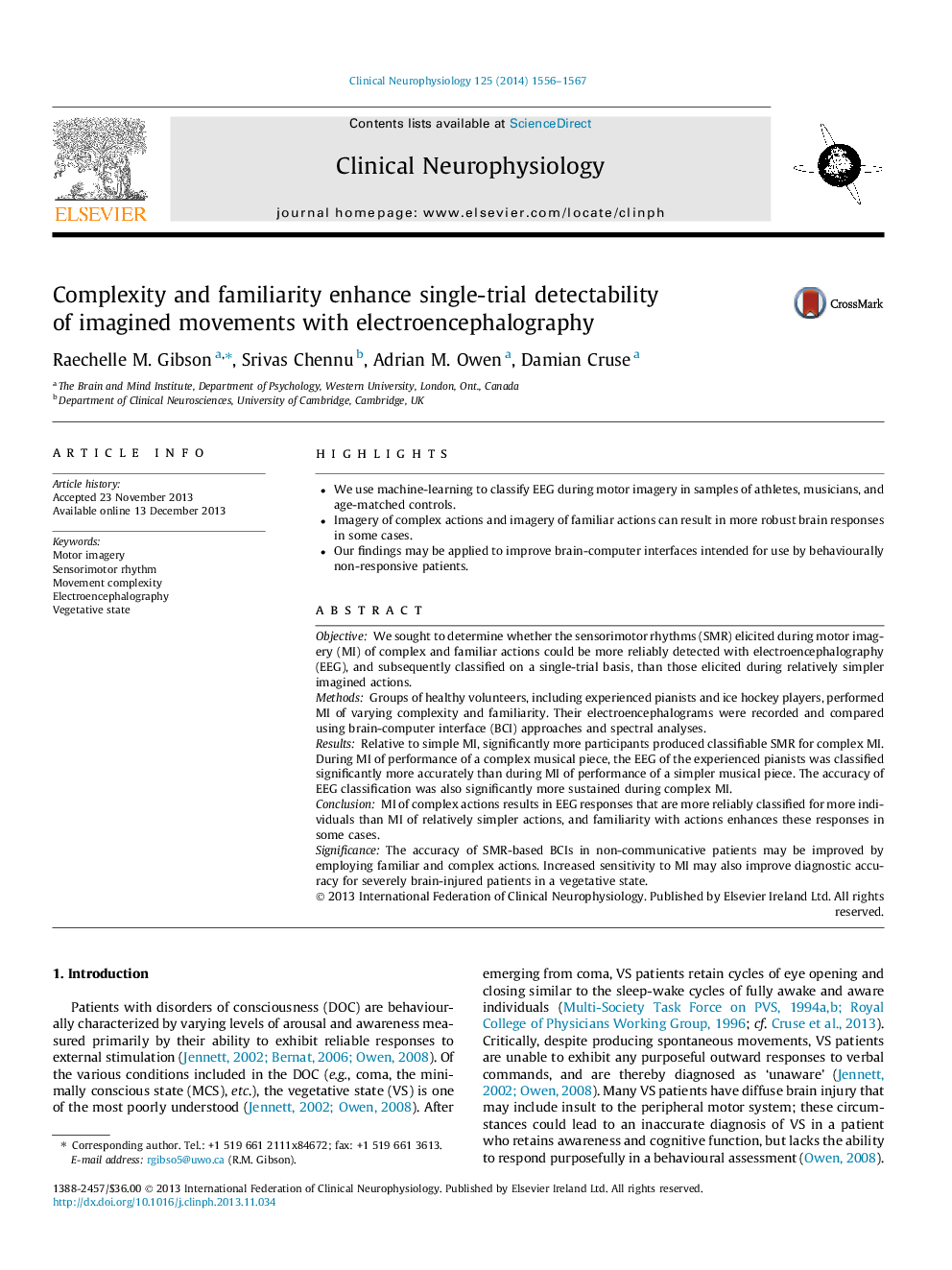| Article ID | Journal | Published Year | Pages | File Type |
|---|---|---|---|---|
| 3043483 | Clinical Neurophysiology | 2014 | 12 Pages |
•We use machine-learning to classify EEG during motor imagery in samples of athletes, musicians, and age-matched controls.•Imagery of complex actions and imagery of familiar actions can result in more robust brain responses in some cases.•Our findings may be applied to improve brain-computer interfaces intended for use by behaviourally non-responsive patients.
ObjectiveWe sought to determine whether the sensorimotor rhythms (SMR) elicited during motor imagery (MI) of complex and familiar actions could be more reliably detected with electroencephalography (EEG), and subsequently classified on a single-trial basis, than those elicited during relatively simpler imagined actions.MethodsGroups of healthy volunteers, including experienced pianists and ice hockey players, performed MI of varying complexity and familiarity. Their electroencephalograms were recorded and compared using brain-computer interface (BCI) approaches and spectral analyses.ResultsRelative to simple MI, significantly more participants produced classifiable SMR for complex MI. During MI of performance of a complex musical piece, the EEG of the experienced pianists was classified significantly more accurately than during MI of performance of a simpler musical piece. The accuracy of EEG classification was also significantly more sustained during complex MI.ConclusionMI of complex actions results in EEG responses that are more reliably classified for more individuals than MI of relatively simpler actions, and familiarity with actions enhances these responses in some cases.SignificanceThe accuracy of SMR-based BCIs in non-communicative patients may be improved by employing familiar and complex actions. Increased sensitivity to MI may also improve diagnostic accuracy for severely brain-injured patients in a vegetative state.
